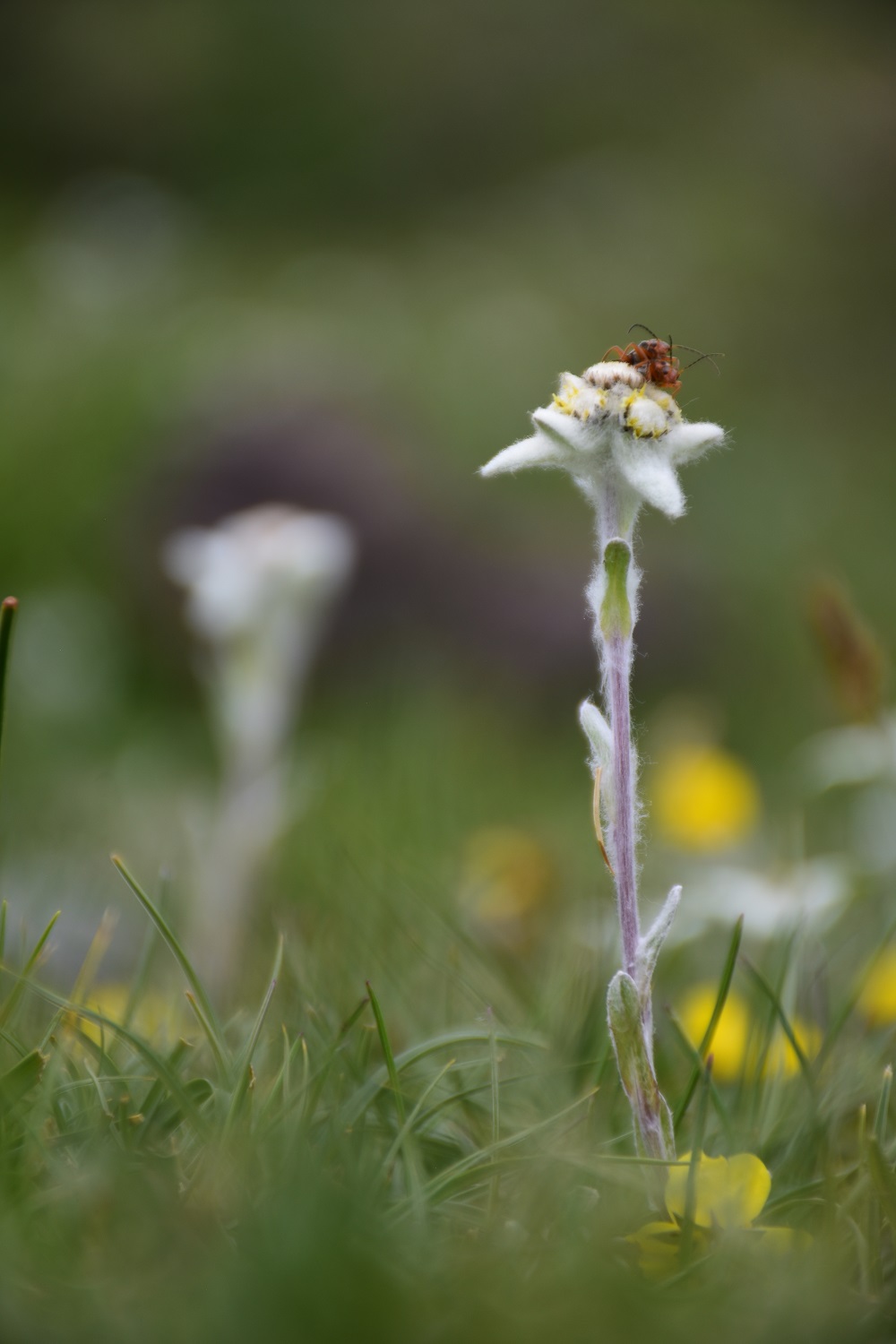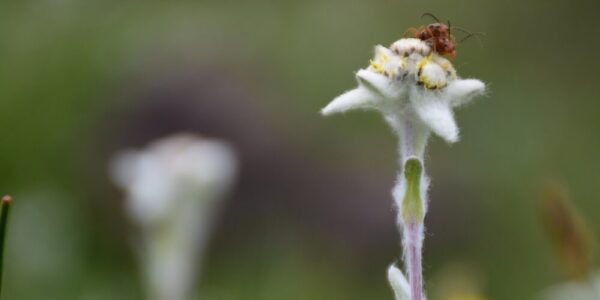Lookmik: The Alpine Medicinal Plant of Kargil with Therapeutic Potential
During a recent picnic excursion to Sapi village in Kargil, I had the delightful opportunity to capture photographs of a captivating plant adorned with fuzzy and stout “petals” that strikingly resembled a lion’s paw. Intrigued by its unique appearance, I was eager to learn more about this remarkable plant. It was during this journey that Haji Hussain Pashkumpa, a knowledgeable companion shared with me that this plant holds the esteemed status of being the national symbol of Austria. This revelation further fueled my curiosity, prompting me to delve deeper into understanding the intricacies of this captivating plant. Assisted by my friend Shabbir Hussain Fayaz, a brief research endeavor to uncover the mysteries surrounding this fascinating botanical gem.

Leontopodium nivale ssp. alpinum, commonly known as Edelweiss, and locally known as “Lookmik” in Kargil is a perennial herb that has long been revered for its medicinal properties in Alpine countries and neighboring regions. Growing up to 20 cm in height, this plant thrives at elevations between 1000 and 3400 m above sea level, making its home on limy soils, stony meadows, and even rocky terrains.
Abundant in the high reaches of Kargil, Ladakh, the Edelweiss is an iconic plant known for its cultural significance. It holds the status of a national symbol in Austria, often worn as a cap emblem by Austrian troops and depicted on the country’s coins. Its charm even inspired a song in the renowned musical production, The Sound of Music, with lyrics penned by Oscar Hammerstein.
* Click to Follow Voice of Ladakh on WhatsApp *
Beyond its cultural value, various extracts and compounds derived from Edelweiss have exhibited a wide range of pharmacological activities, particularly on the cardiovascular and nervous systems. The plant’s properties also include anti-inflammatory, antimicrobial, antioxidant, and chemoprotective effects.
These observed pharmacological activities, combined with the plant’s relatively low toxicity, suggest its potential as a source for developing therapeutic agents to address various human diseases.
Leontopodium is primarily concentrated in Asia, with 41 species, including presumed hybrids, contributing to its diversity. In Europe, only one species, L. nivale, is native. Traditionally, Edelweiss has been applied as a compress, particularly in breast cancer treatment. Today, extracts from the aerial parts of the plant are utilized in cosmetic preparations for their antioxidant properties, notably in sunscreen products.
Sadly, due to extensive harvesting from its natural habitats for various purposes, Edelweiss populations have significantly declined. Although the species is currently listed as Least Concern (LC) in the IUCN Red List of Threatened Species, its rarity is acknowledged. Many countries have implemented legal bans on the collection of wild Edelweiss, leading to increased cultivation efforts in Switzerland to meet demand.
The preservation and sustainable cultivation of Edelweiss are vital for safeguarding this remarkable plant’s future and ensuring its availability for both traditional and modern medicinal applications. Continued research and conservation efforts can unlock further insights into the potential benefits that Edelweiss holds for human health.
3 Comments
Leave a Reply

Thanks for the prompt brief research on the plant and bringing out an informative piece…. Keep it up
Thanks for such informative, more power to your pen . Highly Accolades to dear Anwar sahib
Thanks for such informative write up, more power to your pen . Highly Accolades to dear Anwar sahib